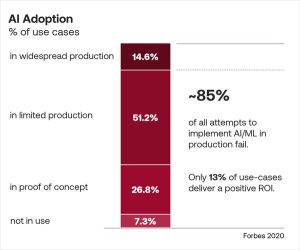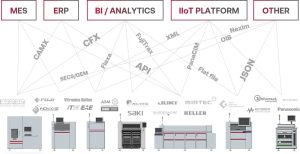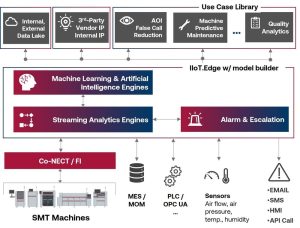Why do 85% of AI projects fail… and how can you make yours have a positive ROI?
 Why is that? Why is it that in an industry that generates billions of dollars every year, companies are still struggling to get a grip on this technology? In this article, we’ll explore possible answers, and discuss how to make your AI manufacturing project beneficial in the long term.
Why is that? Why is it that in an industry that generates billions of dollars every year, companies are still struggling to get a grip on this technology? In this article, we’ll explore possible answers, and discuss how to make your AI manufacturing project beneficial in the long term.
Reason #1: Factory-Wide Connectivity
Even though connectivity has been talked about for many, many years now, it is still a major concern for most electronics manufacturing factories around the globe. In fact, our Business Development Director Michael Ho wrote an article on this subject last November after his trip to Asia. Today, the question is more: “Why does having the wrong connectivity solution doom your AI project?”
Well, it’s not only about getting data out of your machines/processes anymore. For your AI project to have a positive ROI, your data needs to be normalized, structured and contextualized as explained by our Product Manager, Julie Cliché-Dubois, during her interview with EMS Now. Cogiscan’s Co-NECT platform is one of the most widely adopted solutions in the industry, not only because of the largest library of adapters, but also because of the domain expertise embedded in the platform to make sense out of the factory-wide “jungle of data”, as Julie explained to Eric Miscoll. In fact, many equipment vendors, including ASM, Mycronic and Juki have chosen Co-NECT as their connectivity solution.

Reason #2: Big Data vs. Smart Data

The Data Swamp
In fact, there’s already a term for this problem: “data swamp” which refers to a “data lake containing unstructured, ungoverned data that has gotten out of hand.” In other words, there is no AI project without data, and most certainly no AI project without structure. It doesn’t matter how long you’ve been collecting data, without structure and intent from the beginning, you’ll likely have to start over.
Reason #3: Running AI on the Edge

Final Thoughts

We’ve taken all these considerations into account while creating our AI use cases. Our data scientists have poured hours into build our models and we’ve trained them in real life factories across the globe.











